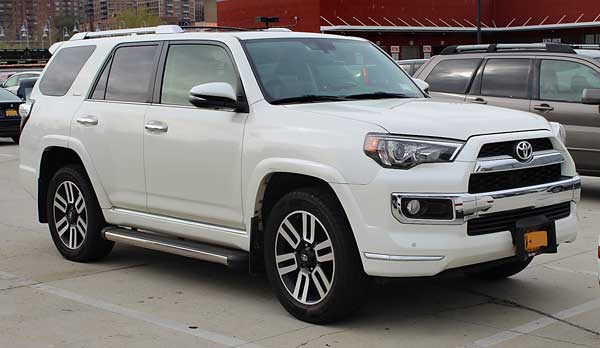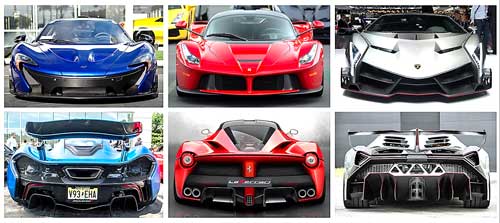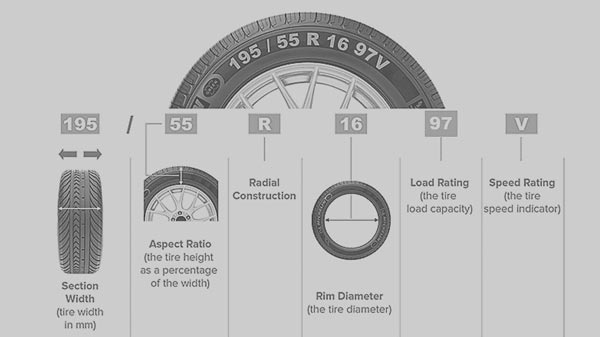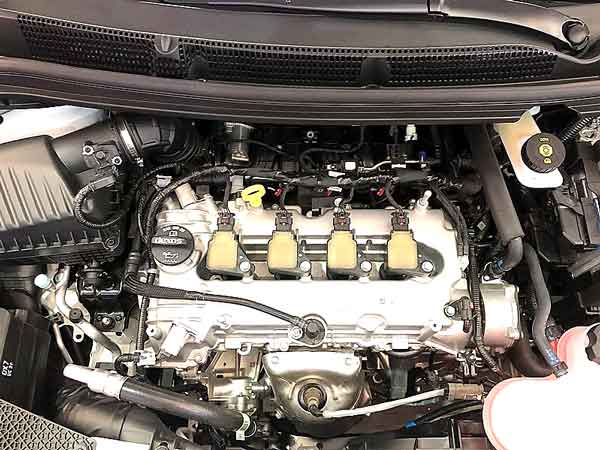Understanding the Poor Gas Mileage of the Toyota 4Runner
Why is Toyota, known for its off-road toughness, toughness, and ruggedness, always criticized for the 4Runner’s fuel inefficiency? why is 4runner mpg so bad? Despite a loyal following focused on its off-road prowess, the 4Runner faces particular scrutiny for its MPG (miles per gallon) performance that often confuses drivers.

Photo: 2014 Toyota 4Runner Limited 4.0L front
Its unmatched off-road capabilities, with features such as a strong body-upper frame construction and improved traction systems for smoothness help appeal to adventure seekers however, the trade-off is apparent in fuel less than stellar finances, Concerns for environmentally- conscious consumers and everyday demanders of affordable cars.
The 4Runner’s reliance on a powerful but fuel-thirsty engine, combined with weight and aerodynamics optimized for off-road stability rather than performance, defines the compromise between performance and economy in It is still the top choice for enthusiasts.
The Basics of Fuel Efficiency
In recent years increasing consumer concerns about environment, fuel prices and fuel efficiency put fuel efficiency at the top of their priorities Thus this change in mindset has driven manufacturers to continue to seek a balance between power, performance and fuel efficiency. Despite these efforts, the 4Runner, a car known for its sophistication, presents a unique challenge.
The emphasis on specific aspects, such as power and efficiency, inadvertently confounded gas mileage. Although the 4Runner excels in terms of off-road prowess and solid performance, its fuel efficiency may not meet the expectations of economy-oriented buyers the former is dealt with. This trade illustrates the ongoing challenge facing manufacturers – meeting customer demands for electrical performance with greater emphasis on environmentally friendly, clean driving solutions on learning.
Thus, the 4Runner’s unique characteristics may come at the expense of fuel efficiency, reflecting broader struggles in the automotive industry.
Design and Weight
The 4Runner’s sub-par fuel economy is mainly due to its unique design and massive weight. Unlike cars that use single-body production, the 4Runner uses a mechanical body platform, which naturally contributes to its weight. It’s a combination of weight, a stronger suspension system, four-wheel drive capabilities, bigger tires and other off-road-minded qualities that have boosted its fuel consumption dramatically.
Giving priority to off-road performance requires a stiff frame and body combination, which naturally increases the overall weight of the vehicle Although this design ensures responsible handling commendably over rough terrain and offers an increased sense of safety, certainly in relation to the fuel efficiency.
Poised to deliver unmatched off-road prowess and durability, the 4Runner’s construction is an inadvertent key to its fuel economy The trade-off between power and fuel efficiency is apparent because of its due to its strong frame and feature-rich design, making it a preferred choice for adventure enthusiasts but At the same time it affects its gas mileage due to the added weight and special features.
Aerodynamics
The 4Runner’s fuel efficiency is heavily influenced by its aerodynamics. Its unique boxy and angular design, though iconic for its rugged aesthetic and spacious interior, poses a challenge in terms of aerodynamic efficiency The car’s blunt front end, elevated floor clearance and overall shape all combine to provide great wind stopping, force the engine makes it work harder to keep moving.
This higher resistance inevitably translates to higher fuel economy, especially for high-speed cruising. The outstanding characteristics of the car, while appealing due to its stiffness and internal capacity, paradoxically contribute to lower fuel consumption due to increased emissions.
Engine Performance
The 4Runner stands out thanks to its powerful V6 engine, tuned for off-road prowess and towing prowess. This power boost ensures plenty of power and torque, which is necessary to conquer rough terrain and pull heavy loads. However, this cold performance comes with a drawback: reduced fuel economy. Balancing power demand and fuel efficiency is a recurring challenge in vehicles designed for challenging terrain, and the 4Runner epitomizes this trade-off.
The engine’s generous displacement and drivetrain highlights the torque and towing ability that greatly impact its miles per gallon (MPG) figures, and sets it apart from the smaller, more economical economy engines typically found in some crossover SUVs or sedans Ode gave him the. Despite the retirement, the 4Runner remains a strong choice for those who appreciate the power and ability of their vehicles, although it emphasizes its commitment to untamed success at the expense of fuel consumption though.
Off-Road Capabilities
The Toyota 4Runner stands as a testament to the clear design for off-road prowess. Built to conquer rugged terrain, it has a variety of special features optimized for adventurous travel. Its impressive arsenal includes a complex system with four-wheel drive, a purpose-built differential locking system and a carefully crafted suspension These features are its power the very essence of the model, allowing it to traverse rough terrain with incredible speed and traction.

But that emphasis on trails comes with tradeoffs. The addition of these high-performance features gives the car great weight while delivering powerful mechanics. Consequently, these additional features lower the 4Runner’s fuel economy when traveling on conventional roads. Increased weight and more complex mechanics on specific roads result in more friction and power loss in the vehicle, which subsequently affects the vehicle’s overall miles per gallon (MPG).
Specifically, although the 4Runner excels at off-road adventures, the very things that make it such a phenomenon contribute to its fuel efficiency and reduced mpg during daily cruising.
Transmission
The choice of transmission greatly affects a vehicle’s fuel efficiency and plays an important role in its overall performance. Take the 4Runner, for example, which typically offers a five-speed or a modern six-speed automatic. These messages have dignified power; but compared to other advanced and fuel-efficient vehicles such as a continuously variable transmission (CVT), perhaps not.
Unlike the 4Runner’s transmission, CVTs represent modern transmission technology, known for its smooth operation and fuel efficiency These differences in transmissions directly affect the vehicle’s fuel economy.
The 4Runner’s five-speed or six-speed automatic transmission offers commendable performance but can’t match the efficiency of the latest CVTs found in many other cars The CVT’s innovative design and dynamic smooth gear changes, refined fuel -And helps with efficiency, making them a favored choice for those who prefer better gas mileage As automotive technology continues to improve, transmission type remains a major determinant of vehicle fuel consumption function well, reflecting both driving experiences and the environment.
Improve Gas Mileage (MPG)
Toyota 4Runner’s Gas Mileage (MPG) on the 4runner can be improved by following:
- Driving Habits: Reduce excessive short trips and manage throttle acceleration to maintain lower RPMs.
- Temperature Control: Minimize the use of air conditioning, especially in favor of HCF (Hydrocarbon filter) deletion in appropriate climates.
- Weather Consideration: Limit frequent travel in cold weather conditions which can impact fuel efficiency.
- Weight Management: Reduce vehicle weight, avoid excessive towing, and eliminate unnecessary items to improve efficiency.
- Speed Control: Drive at moderate speeds to optimize fuel consumption.
- Regular Maintenance: Check and replace spark plugs, fuel injectors, air filters, and ensure proper tire alignment and PSI.
- Oil and Tire Pressure: Consider switching to synthetic oil and regularly calibrate and check tire pressure.
- Future Focus: Prioritize areas like highway tires vs. all-terrain tires, air filters with cold air intakes, lift kits, suspension upgrades, and roof rack usage to potentially enhance MPG.
- For further inquiries or more detailed coverage on specific topics, please leave questions in the comments section for future discussions.
Understanding the Design Tradeoffs of the Toyota 4Runner
Known for its exceptional off-road performance, durability and reliability, the Toyota 4Runner exudes fuel efficiency thanks to a customized system selection designed for its specific market segment building powerful, construction for its emphasis on durability and longevity. It is important to do business in the middle. Aimed at buyers who appreciate off-road prowess and longevity, the 4Runner’s impaired fuel economy can be considered an acceptable sacrifice. But by prioritizing fuel efficiency for regular urban driving, there will be more convenient options for better gas mileage.

Photo: SUV near forest, offroad, vehicle, transportation
Among the factors that contribute to the 4Runner’s lower fuel economy (4runner mpg so bad) are its greater weight, aerodynamics rather than efficiency, and a powerful engine optimized for business rather than finance. Prospective buyers benefit from understanding these design tradeoffs. This understanding enables informed decision-making in line with individual preferences and needs. It can perform a balanced analysis, assessing the vehicle’s ability to conquer challenging terrain against its fuel consumption limitations and thus allow consumers to choose a vehicle with their cargo special needs meet, whether it’s the 4Runner’s power or the fuel-efficient way to use it every day.







One Comment